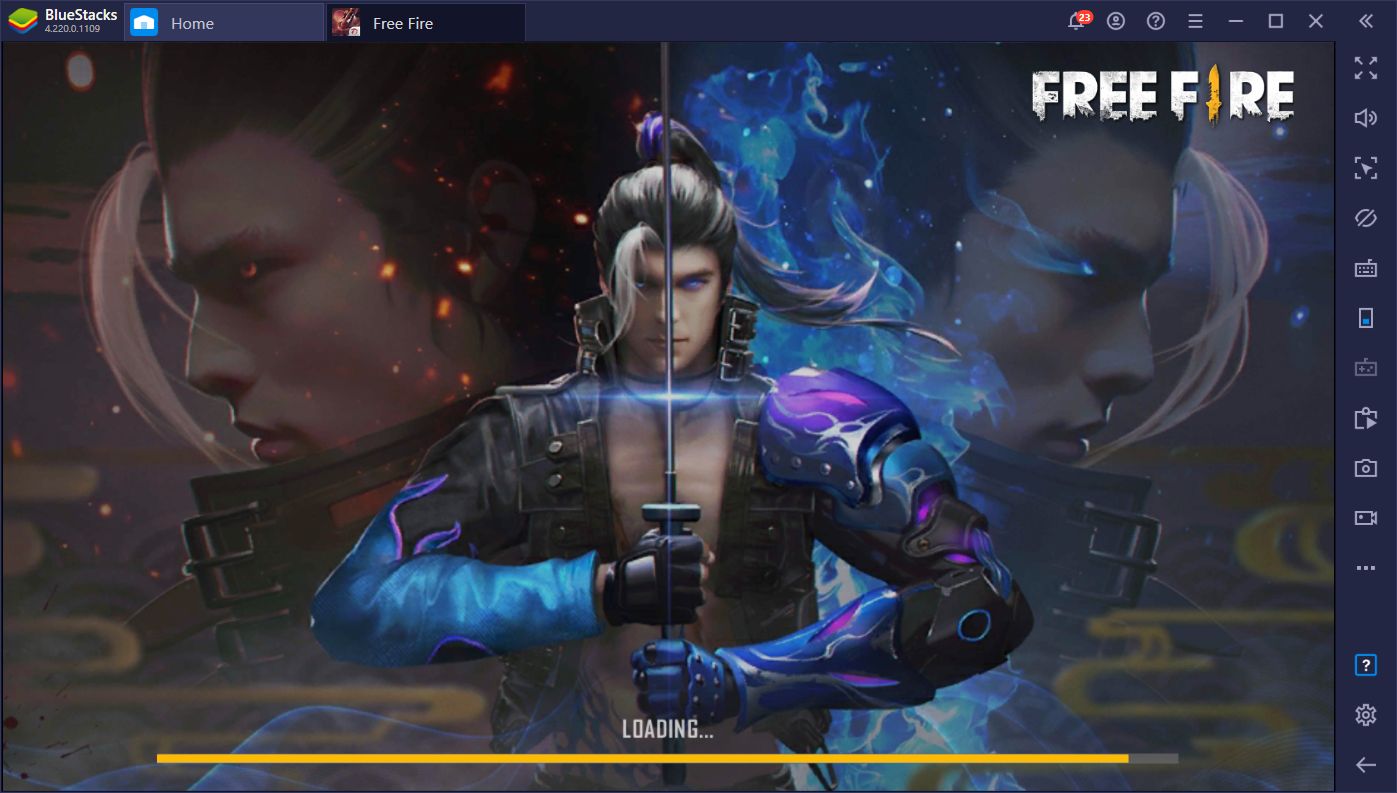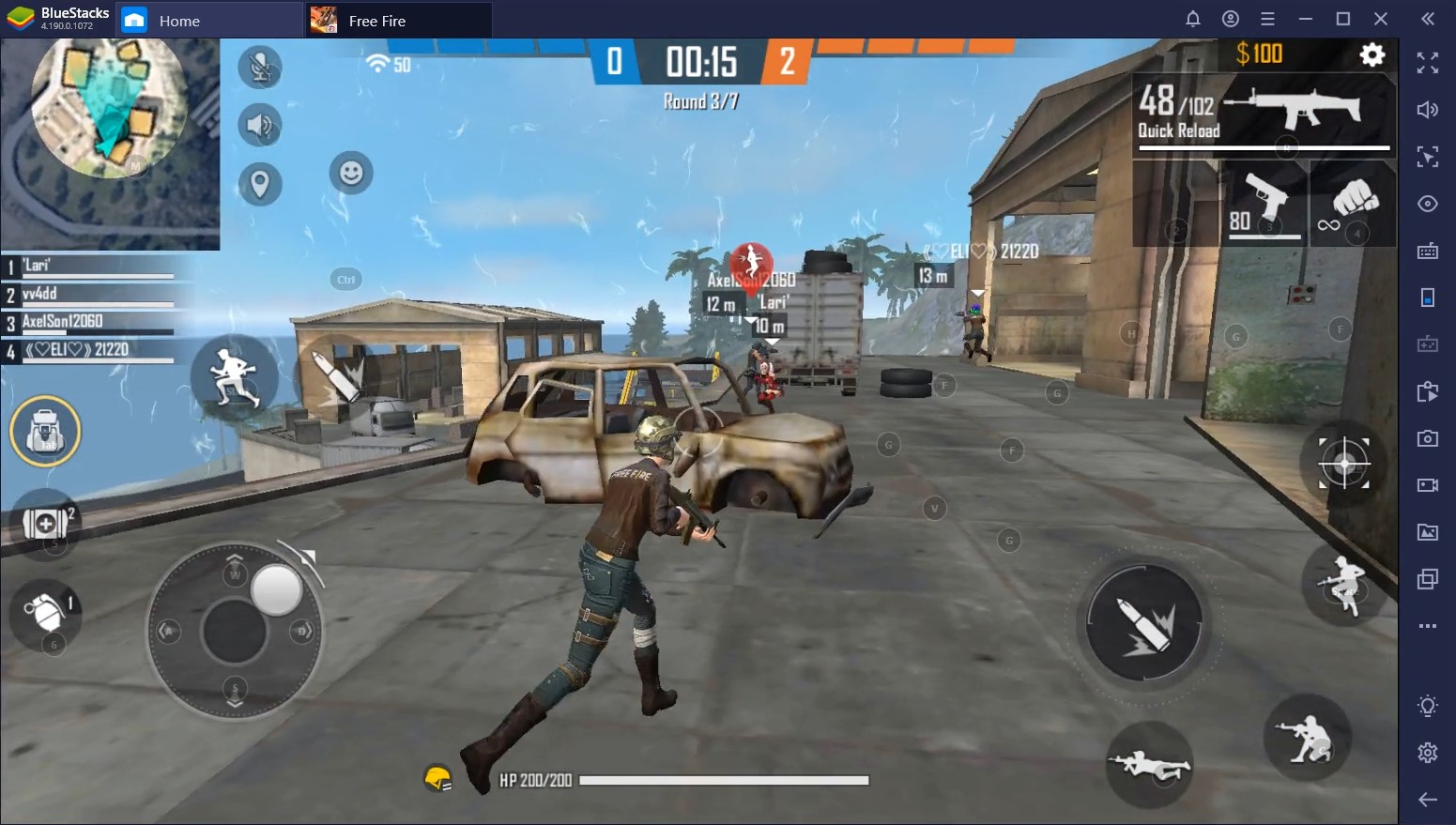Bullet Spread and Recoil in Free Fire – Weapon Category Guide

In Free Fire, mastering your weapon isn’t just about picking one with high damage—it’s about understanding how it fires. Whether you’re using an SMG to rush enemies in Clash Squad or an assault rifle to dominate Battle Royale, your aim depends on two core mechanics: bullet spread and recoil.
Both of these mechanics affect how your shots behave, especially under sustained fire. If you’ve ever wondered why your aim feels inconsistent or why your crosshair drifts even when you’re standing still, this guide will help you decode the behavior of each weapon class and teach you how to shoot with precision. Let’s dive deep into how bullet spread and recoil work in Free Fire and how to control them for better performance. For an introduction to the game, check out our Beginner’s Guide for Free Fire!
What Is Bullet Spread in Free Fire?
Bullet spread refers to the randomness applied to the direction your bullets travel, even when your aim is on point. This phenomenon is most noticeable when firing automatic weapons at full spray, jumping, or moving while shooting.
Factors That Increase Bullet Spread:
- Moving or jumping while shooting
- Holding down the fire button for long bursts
- Using weapons with naturally low accuracy
- Lack of stabilizing attachments like foregrips or muzzles
Ways to Reduce Bullet Spread:
- Stand still or crouch while firing
- Use tap fire or short controlled bursts instead of spraying
- Equip attachments that boost accuracy, such as muzzle and foregrip
- Use aim assist wisely in close-range situations
Bullet spread can be the difference between landing a clean headshot and missing entirely, especially in rapid-fire scenarios.

What Is Recoil in Free Fire?
Recoil is the mechanical “kickback” you feel when firing a gun. It pulls your crosshair away from the center of your target—either vertically, horizontally, or both. Unless countered manually, it makes consecutive shots less accurate the longer you fire.
Types of Recoil:
- Vertical Recoil: Your crosshair climbs upwards as you shoot.
- Horizontal Recoil: Your aim shifts side to side in a less predictable pattern.
Recoil Control Tips:
- Pull your aim downward to counter vertical recoil
- Use attachments like foregrips and stocks to stabilize aim
- Fire in short bursts to reset recoil between shots
- Crouch or go prone to reduce the effect of kickback
Mastering recoil control gives you a consistent edge in fights, especially in mid-to-long-range engagements.
Weapon Category Breakdown – Spread & Recoil Characteristics
Each weapon category in Free Fire behaves differently in terms of bullet spread and recoil. Understanding the general tendencies of these categories helps you choose the right gun for your playstyle.
1. Assault Rifles (ARs)
Assault rifles are versatile weapons used for medium to long-range combat. They offer a balance between recoil, bullet spread, and damage.
Typical Behavior:
- Moderate recoil and spread
- Accurate in short bursts
- Effective with proper attachments
Weapon Examples & Tips:
- M4A1: Very low recoil and minimal spread make it beginner-friendly. Great for long-range shooting with little control effort.
- AK: High recoil but excellent damage. Requires good recoil control or burst firing.
- SCAR: Balanced stats, low spread with consistent output. Works well for players still learning spray control.
- Groza: Premium AR with exceptional stability and power. Very little bullet spread, making it deadly in mid-range fights.
Tips:
- Avoid full-auto fire—stick to 3-4 round bursts.
- Use a foregrip and muzzle to manage both recoil and spread.
- Crouch for extra accuracy in extended fights.

2. Submachine Guns (SMGs)
SMGs are built for close-range combat, offering high fire rates but less accuracy and more spread than ARs.
Typical Behavior:
- Low recoil, but very high bullet spread
- Extremely fast fire rate
- Ineffective beyond medium range
Weapon Examples & Tips:
- MP40: Insane fire rate, low recoil, but wild bullet spread. Great for rushing opponents.
- UMP: Balanced with decent accuracy and armor penetration. Slightly more stable than MP40.
- Vector (Dual): Fires both guns simultaneously. Extreme spread but devastating at close quarters.
- MP5: Offers slightly more range than other SMGs with manageable spread.
Tips:
- Always engage at close range.
- Fire while moving, but keep encounters quick.
- Use movement speed to your advantage—aiming for the chest or upper body.

3. Sniper Rifles
Snipers offer extreme damage with no bullet spread, but high recoil. Perfect for players who prefer patient, precision-based combat.
Typical Behavior:
- No spread (perfect accuracy when scoped)
- Very high recoil between shots
- Requires accurate crosshair placement
Weapon Examples & Tips:
- AWM: The king of one-shot kills. Massive recoil, but unmatched power.
- KAR98K: A bit slower than AWM, but still deadly with precise shots.
- M82B: Can penetrate gloo walls, offering utility in squad fights.
Tips:
- Always scope in before firing—hip-firing is ineffective.
- Don’t rush shots; wait for the crosshair to reset.
- Avoid moving while shooting—movement ruins aim stability.

4. Designated Marksman Rifles (DMRs)
DMRs are semi-automatic rifles suited for high-accuracy, mid-to-long range support roles.
Typical Behavior:
- Low bullet spread
- Moderate to high recoil depending on fire rate
- Best used with tap fire
Weapon Examples & Tips:
- SVD: Great for body shots and consistent damage. Some recoil, but manageable.
- Woodpecker: Low spread, very high armor penetration. Requires precision but very rewarding.
Tips:
- Fire slowly to manage recoil and preserve accuracy.
- Equip scopes to maximize precision.
- Combines well with AR or SMG for close combat backup.

5. Shotguns
Shotguns deal high burst damage in close combat using spread-based mechanics. They don’t have traditional recoil concerns but require aim discipline.
Typical Behavior:
- Extreme bullet spread
- No meaningful recoil (due to single or dual-shot design)
- Ineffective at range
Weapon Examples & Tips:
- M1887: Only two shells but devastating damage. Extremely high spread.
- M1014: Reliable and powerful, wider pellet spread.
- MAG-7: Semi-automatic, offering better control and follow-up.
Tips:
- Hip-fire when enemies are within 5 meters.
- Aim for the upper torso or head.
- Don’t attempt long-range fights—retreat or swap weapons.

6. Light Machine Guns (LMGs)
LMGs offer sustained fire with huge magazines but at the cost of high recoil and spread without attachments.
Typical Behavior:
- High recoil and moderate to high spread
- Slower aim and mobility
- Useful for suppression and crowd control
Weapon Examples & Tips:
- M249: Large mag and decent output, but hard to control without crouching.
- KORD: Better recoil when crouched or prone. Superior for defensive play.
Tips:
- Always crouch or go prone when using LMGs.
- Use for area denial and sustained fire, not precision kills.
- Fire in longer bursts, but be aware of your recoil pattern.

Best Attachments to Control Recoil and Spread
Using the right attachments drastically improves your weapon’s performance:
- Foregrip: Reduces both vertical and horizontal recoil. Essential for ARs and SMGs.
- Muzzle: Improves accuracy by tightening bullet spread.
- Stock: Improves weapon stability and reduces recoil recovery delay.
- Scope: Doesn’t affect recoil or spread but helps with precision and tracking.
Always prioritize attachments on high-recoil weapons. Some advanced players even base their weapon choices around which attachments they have available.
In Free Fire, shooting is more than pulling the trigger—it’s about understanding your weapon’s behavior under pressure. Bullet spread and recoil determine whether your shots land or miss, especially in chaotic firefights. By learning how each weapon category behaves, equipping the right attachments, and practicing recoil control, you’ll gain a major edge over opponents who spray and pray.
Whether you’re a sniper looking for one-shot kills or a rusher trying to land every SMG shot, mastering these mechanics is the next step in becoming an elite Free Fire player. Know your tools, respect their limits, and take control—literally—of every shot you fire. For the best gaming experience, play Free Fire on PC with BlueStacks!
















